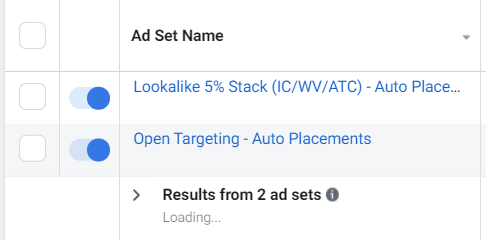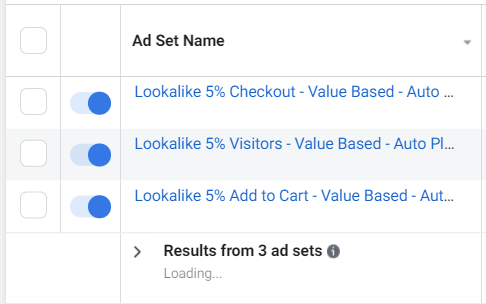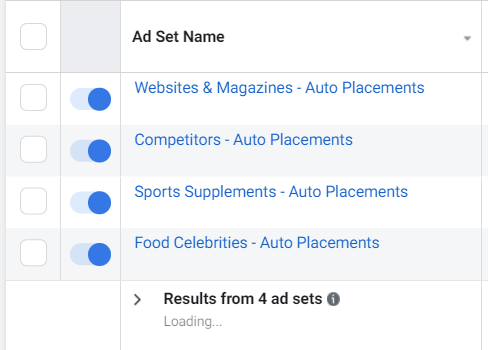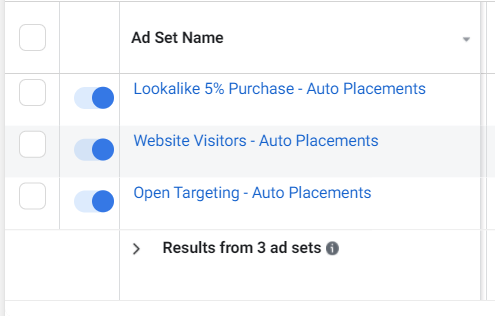Back in February 2017, Facebook introduced Campaign Budget Optimization under the pre-text it would soon be the default method for campaign budget allocation within an account.
Fast forward to late 2020, and due to a lot of back-lash from the advertising community, Facebook has reverted the decision and this feature still remains optional.
But does this mean Campaign Budget Optimization isn’t as effective as once believed? And what is CBO, exactly?
For once, absolutely not. We love our CBOs – not to be mistaken with McDonalds’ CBO – but there’s a time and place for them. More on this in a minute.
As for what Campaign Budget Optimization is, read on.
What is Campaign Budget Optimization?
Campaign Budget Optimization is one of Facebook’s automation-focused features that allows advertisers to allocate their budgets at the campaign level, rather than the ad set level.
This unlocks several different advantages that effectively lower costs and improve overall results.
- Less Manual Work: this feature makes it easier to have smaller account structures due to fewer ad sets. It also removes the need to edit budgets individually at the ad set level.
- Easier to Scale: CBO campaigns are less volatile to changes, which makes them easier to scale.
- Less Audience Overlap: since auctions are “decided” at the campaign level, there’s less of a risk for auction overlap between audiences.
- It Leverages AI: let’s face it, AI is much smarter than us. With CBO enabled, Facebook will be able to find the most valuable auctions within the entire campaign.
How Campaign Budget Optimization Works
To understand the main differences between CBO and ABO (ad set budget optimization) we need to take a look at how Facebook’s auction system works.

In order to win an auction, Facebook will take three factors into consideration: bids, estimated action rates, and relevance. In other words, the better the estimated action rate and relevance in an auction, the less you need to bid – which leads to lower costs.
With CBO, Facebook can shift more resources into ad sets where the estimated action rates and relevance are higher.
Why Should I Use CBO?
Campaign Budget Optimization is one of five in Facebook’s automated ad tactics labelled as the Facebook Power 5.
Top direct-response advertisers are now leveraging a specific set of automated ad tactics to unlock new phases for growth. We call these tactics the “Power 5” and when used together, they have the ability to transform ad performance and scale across the Facebook Family of Apps.
These new tactics aim to move advertisers towards a more automated approach, leveraging Facebook’s powerful AI to improve results.
- Account Simplification: fewer campaigns, and broader audiences. Accounts with smaller structures are not only easier to manage, but more effective too.
- Campaign Budget Optimization: set budgets at the campaign level in order to save time and better allocate resources to better audiences and available auctions.
- Automatic Placements: with the proper objectives set, let Facebook identify the best placements and opportunities for valuable auctions.
- Dynamic Ads: leverage Facebook’s AI to discover which headlines, text, and creatives work best when combined.
- Auto Advanced Matching: capture additional customer data, increase the size of your custom audiences, and the quality of your data with a click.
When combined, these five features enable advertisers to achieve better results, at lower costs – and campaign budget optimization is at the center of it all.
How To Create CBO Campaigns
Once you’ve accessed the campaign creation menu, select your campaign objective and choose a name for your campaign.
Scroll down to the bottom of this section and enable the “Campaign Budget Optimization” feature.
That’s it!
How to Structure CBO Campaigns
There are different methods to structure CBO campaigns. We’ll cover some of the most common ones we use, and other methods used by other marketers.
However, there are some considerations that apply to all the structures we’ll mention in this article.
- Smaller Campaigns: whatever the chosen structure, campaigns with fewer ad sets tend to work best – it will make it that much easier to drive 50 conversions per ad set and exit the learning phase faster.
- Similar-Sized Audiences: we’ve seen better results when similar sized-audiences are grouped under the same campaign. We’ll take a look at some examples in a minute.
- Interests & Lookalikes: we tend to keep lookalike audiences and interest-based audiences in different campaigns.
- Auto-Placements: the few scenarios in which we don’t use auto-placements is when we have stories with solid results – in which cases we’ll run them in their own campaigns.
With all that said, let’s take a look at some of the most common structures for CBO campaigns.
1. Lookalike Stack + Open Targeting
One of the most well-known strategies on lookalike audiences is to stack tested lookalike audiences under the same ad set.
Additionally, you would also include an ad set with no interests or lookalike audiences whatsoever – only narrowing down your audience based on age, gender, and location.
In this case, we included three 5% lookalike audiences under the same ad set: add to carts, checkouts initiated, and purchases.
The main idea behind this method is that when Facebook isn’t able to find valuable auctions within the lookalike stack, the open targeting ad set works as a safety net to ensure we’re not missing out on any conversions.
- Strenghts: lots of scaling potential; easy to build and manage.
- Weaknesses: heavy reliance on Facebook’s AI.
- Good For: accounts with high conversion volumes (at least +50 each week per ad set).
- Tips: due to the broad audiences, cost cap bids are recommended.
2. Value-Based Lookalikes
In this scenario, you’ll have somewhere between 3 to 5 ad sets where each one contains one value-based lookalike audience based on lower-funnel website events such as add to carts, checkouts, or purchases.
Take into consideration that the number of ad sets should be based on how much budget you have. If you’re not confident these can drive +50 conversions per week, reduce the number of ad sets.
We’ve seen good results with this method in a few accounts.
- Strengths: easier to isolate the best audiences and see the results for each one of them.
- Weaknesses: a decent volume of unique events is needed to enable value-based audiences.
- Good For: most accounts, but not ideal for high-ticket items.
- Tips: only include audiences that have worked before in the account.
3. Interests + Expansion
Once we’ve identified our best interest-based audiences, we’ll often move them into their own CBO campaigns so we can scale them.
This method is similar to the one above, but with interests instead of lookalike audiences.
- Strengths: less reliance on lookalike audiences; easier to tailor ads to different customer avatars.
- Weaknesses: can be harder to scale than event-based lookalike audiences; can be hard to find broad enough audiences.
- Good For: all accounts (interests are under-rated).
- Tips: enable interest-expansion when audiences are too small for additional scale.
4. Lookalike Audiences/Interests + Open Targeting + Website Visitors
We saved this one for last, but it isn’t by any means the least.
This is the method we’ve seen the best results with in the last months and has been discussed often by some of the industry’s top experts – or similar versions of it, at least.
There are a few reasons why it works.
- It’s easier to structure your account around your product’s characteristics. For instance, we’ve recently run campaigns for a tourism agency that sold different products to different locations. This method made it easy to tailor each campaign to each one of these locations.
- It’s easier to measure results. In the case above, we could easily tell which product was selling the most and adjust accordingly.
- Transparency: one of the most common issues we see in ad accounts we audit is that most of the conversions come from bottom-funnel campaigns – which can often hide how well the account is actually performing. With this method, and with the proper audience exclusions considered, you’ll ensure that you’re focused on the best type of conversions: new customers.
- Strengths: easier to manage;
- Weaknesses: harder to control ad set frequency for remarketing.
- Good For: accounts with geo-specific products/services; accounts with hero-products.
- Tips: use cost caps or daily spend limits to control ad frequency on remarketing audiences.
Frequently Asked Questions
There are lots of questions around campaign budget optimizations. We’ll try to cover some of the most common ones in this section and update them as we can.
Why Does Facebook Spend More In Ad Sets With Higher CPA?
To answer this question, we’ll have to look back at how the ad auction system works. Looking at the three main elements, we have: bid * estimated action rates + ad relevance.
What Facebook looks at in an auction is to the estimated action rate for each user – in other words, how likely that user is to take your desired action.
So the answer to this question is very straight-forward: Facebook doesn’t look at past results to allocate resources, it tries to predict where the most conversions can be found.
If Facebook didn’t allocate more resources into that ad set, it’s because it didn’t have enough scale.
Should I Pause Poor Performers?
In most cases, when there’s an ad set with poor results, advertisers will pause it and often find themselves with worse results.
What happened?
In Facebook’s documentation, they state that:
CBO distributes budget to maximize all available opportunities, and pausing a low delivery ad set today prevents CBO from finding tomorrow’s opportunities. This can ultimately cause an increase in cost per action (CPA) for your active ad sets.
We’ve found this to be true, and don’t recommend to pause poor performers.
Should I Use Budget Limits?
In some cases, we do set daily spend limits for ad sets in order to control rising ad frequencies. However, we recommend this to be the exception, and not the rule.
When we set limits, we’re reducing the flexibility in Facebook’s delivery system and have found that this often results in worse results.
What’s Next?
There’s no “one way to structure them all” method to structure your accounts.
None of the structures discussed in this article should be taken as the definitive how-to on CBO campaigns, but rather as different ideas so you can test out your own approaches, too.
These are the methods that have worked out best for us – but, as with everything in Facebook Ads, you should always test your own ideas.
If you enjoyed this post, feel free to subscribe to our Newsletter – we promise we don’t spam. Every two weeks, we send an email with the industry’s latest news to help you keep up to date with the latest trends.
See you soon!









1 comment
Nice Share, Alex.
Thanks, for sharing this informative article with us in which you have covered everything about Facebook Campaign Budget Optimization.
Further, you can also check-out the mentioned article to get to know about Facebook Ad Budget. Visit Here: https://socinator.com/facebook-latest-features/facebook-ads-budget/.